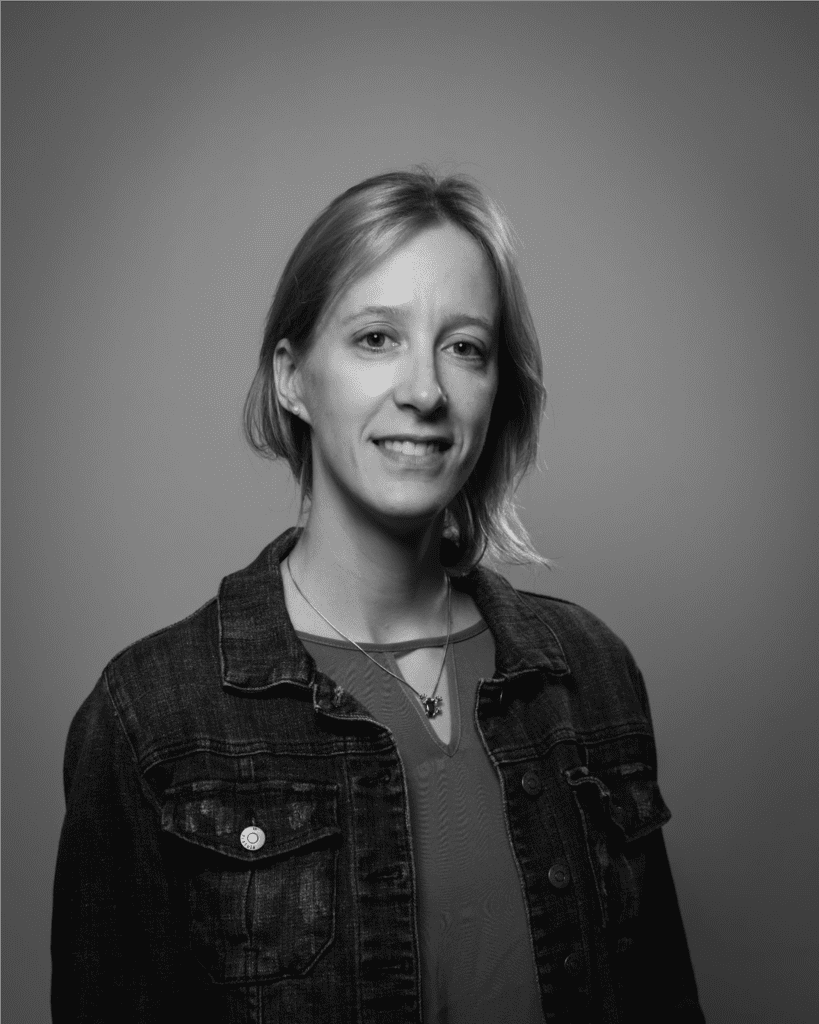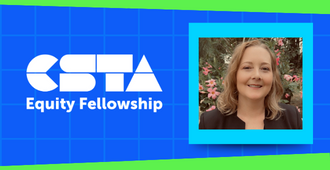Posted by Alexandra Holter on Mar 29, 2023

Getting computer science to be more diverse requires a multi-pronged approach that works to bridge K-12 education with the CS industry.
Full Story
A common refrain heard when discussing how to better serve under-represented groups in CS is “if they can’t see it, they can’t be it.” While I don’t debate the merits of this statement, I do wonder where it starts. For me this is the classic “chicken or the egg” argument. We need increased representation to encourage more students of all races, genders and backgrounds to feel a sense of belonging and empowerment in CS. However, in the absence of that we need a well-informed community of educators who can effectively and accurately illuminate the possibilities of computer science (in a perfect world, educators would have access to both). How do we provide students with ways of seeing themselves reflected in CS?
Getting computer science to be more diverse requires a multi-pronged approach.
One way I propose we do this is by thinking more critically about teacher PD in relation to CS/Tech and the role business and industry has to play in this rethinking. I have trained teachers in how to use ozobots, beebots, spheros, makey-makey, micro:bit, computational thinking, and CS integration. While I do not propose stopping these PDs I do recommend thinking about the practical application (or next step, or extension to the real world).
Recently, a group of teachers from the online elementary school, New Code Academy Elementary School, had the opportunity to visit the Target headquarters in Brooklyn Park, MN. I typically shy away from events like this with elementary staff because I have always told myself (incorrectly) that elementary staff don’t care about workforce numbers since their students are too far from that goal for those conversations to seem relevant. Instead, they choose to focus on the transferable skills of CS and the value in computational thinking and building a computing identity. These things create tangible results that seem real to a student’s future in secondary, from an elementary teacher perspective.
Recent conversations in the Twin Cities metro area have centered around doubling the CS/Tech workforce in ten years. These conversations with local business leaders, mostly led by MNTech, have forced me to rethink how and when we talk about the long-term benefits of CS. I asked myself how teachers can be expected to prepare students for what they don’t know if the teachers themselves don’t know what they don’t know.
Our elementary educators are vital links to our K-5 families and essential in building computing identities with our youngest learners and families. Computer science aspirations do not start during a student’s senior or junior year of high school. Plans for the future and beliefs in one’s ability to achieve success in a career path start in elementary school1. It begins with our students and families hearing what is possible and specifically naming and defining those possibilities. This means learning the potential job titles, roles and responsibilities, as well as providing time & space to dream about CS possibilities.
All of this wondering and rethinking led to collaboration with Greg Larson, a Sr. Director of Product Engineering at Target Headquarters. Conversations with Greg lead to brainstorming about different possibilities for seniors in high school to enter into the tech workforce. Quickly we realized that educators need to be able to fluently articulate career options for students if they are to have a foundation to dream about future possibilities in CS. Through this collaboration we designed a ½ day PD experience where educators got to see, hear and experience the corporate CS/Tech world.
During this professional field trip educators interacted with a variety of professionals in a corporate workspace where the value of teams was discussed and collaboration was elevated. Target’s innovative tech was fascinating to see and learn about (not to mention the onsite Starbucks) but surprisingly the most valuable part of the day was having the opportunity to sit with a variety of job titles within the Target Tech world and have honest professional conversations about how to bridge K-12 and business/industry.
Through the course of this experience, it was interesting to see the emergence of common values between business and education. Both groups listed almost identical skill sets when asked what skills a successful early career candidate to Target would possess. Coincidentally, the traits, values, skills, and knowledge being asked for from business professionals were identical to those the teachers felt were essential for all students to be successful in a technology-driven future. The following skills were identified:
- Problem solving & Puzzle solving
- Having a process to solve a problem
- Accepting failure as a form of learning – “fail fast and fail forward”
- Knowing how to learn (research skills) & Troubleshooting
- Teamwork (collaboration) –> “no one person or team can do it all”
- Willingness to try (perseverance)
- Understanding Foundations of CS concepts (logic, abstraction)
- Communication skills
- Receiving critical feedback and giving feedback –> “learning how to debate the idea, not the person”
It always feels powerful when educators are positioned as experts and placed at the same table as business/industry experts. These professional adults were able to have open and honest conversations about their working spheres and gain greater understanding of what each requires in order to achieve the common goal of encouraging more students to pursue CS. Since all of us understand and appreciate that technology intersects with every field and every profession — it must be our collective goal to find new and unique ways to prepare all students to thrive in a rapidly changing, technology-driven world.
1 Bastiaan, J. M., & Bastiaan, R. (2019, June), Increasing the Interest of Elementary School Girls in STEM Fields Through Outreach Activities Paper presented at 2019 ASEE Annual Conference & Exposition, Tampa, Florida. 10.18260/1-2–32961
About the Author

Alexandra Holter is a Computer Science Coordinator, K-12, for Bloomington Public Schools in Bloomington Minnesota. She has been an educator for the past 14 years. Her career started in Tulsa Oklahoma where she obtained her BA and Masters of Science in Mathematics and Science Education. Then she first taught her first class of 7th grade science and has been committed to eliminating young people’s barriers to STEM ever since. In 2015 she completed her Ph.D.in Educational Leadership and Policy Studies from Oklahoma State University. In her current role she supports K-12 teachers and schools with building their individual and site level CS capacity so that CS really can be for all.



